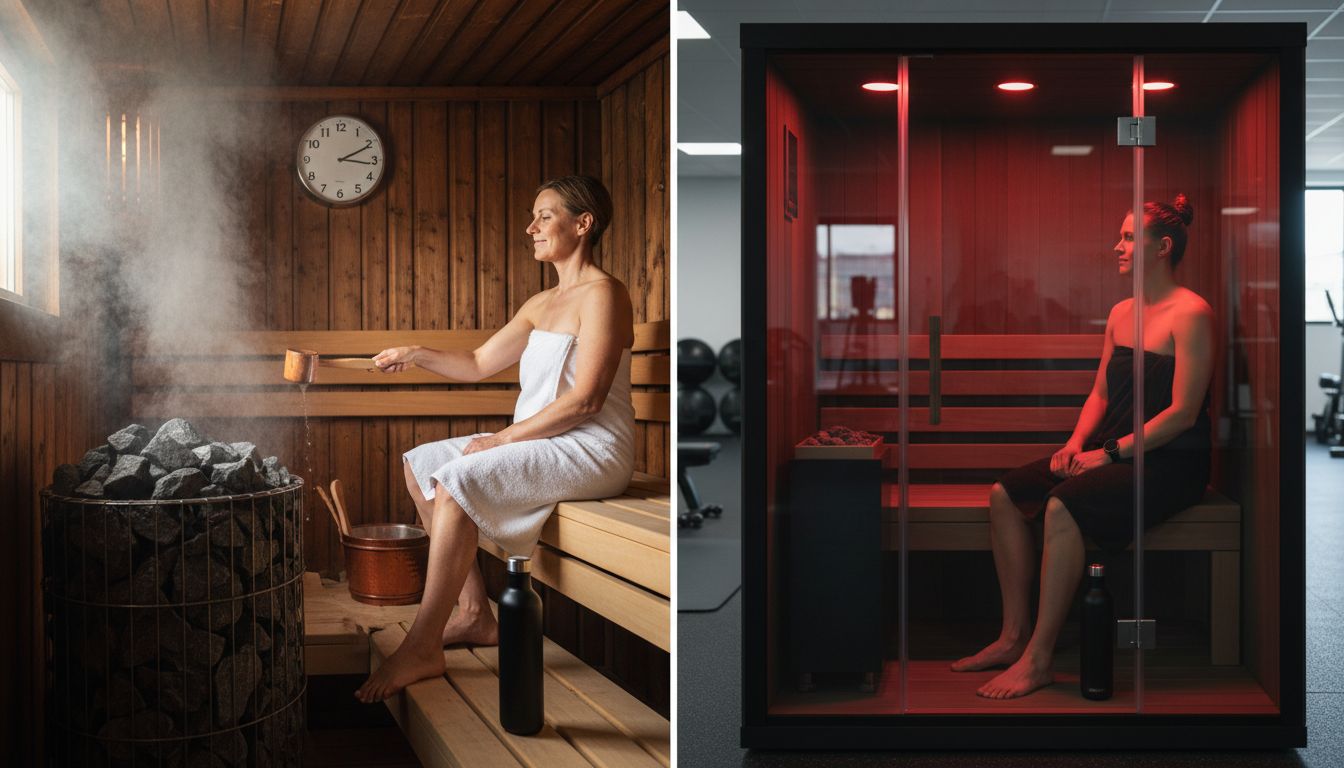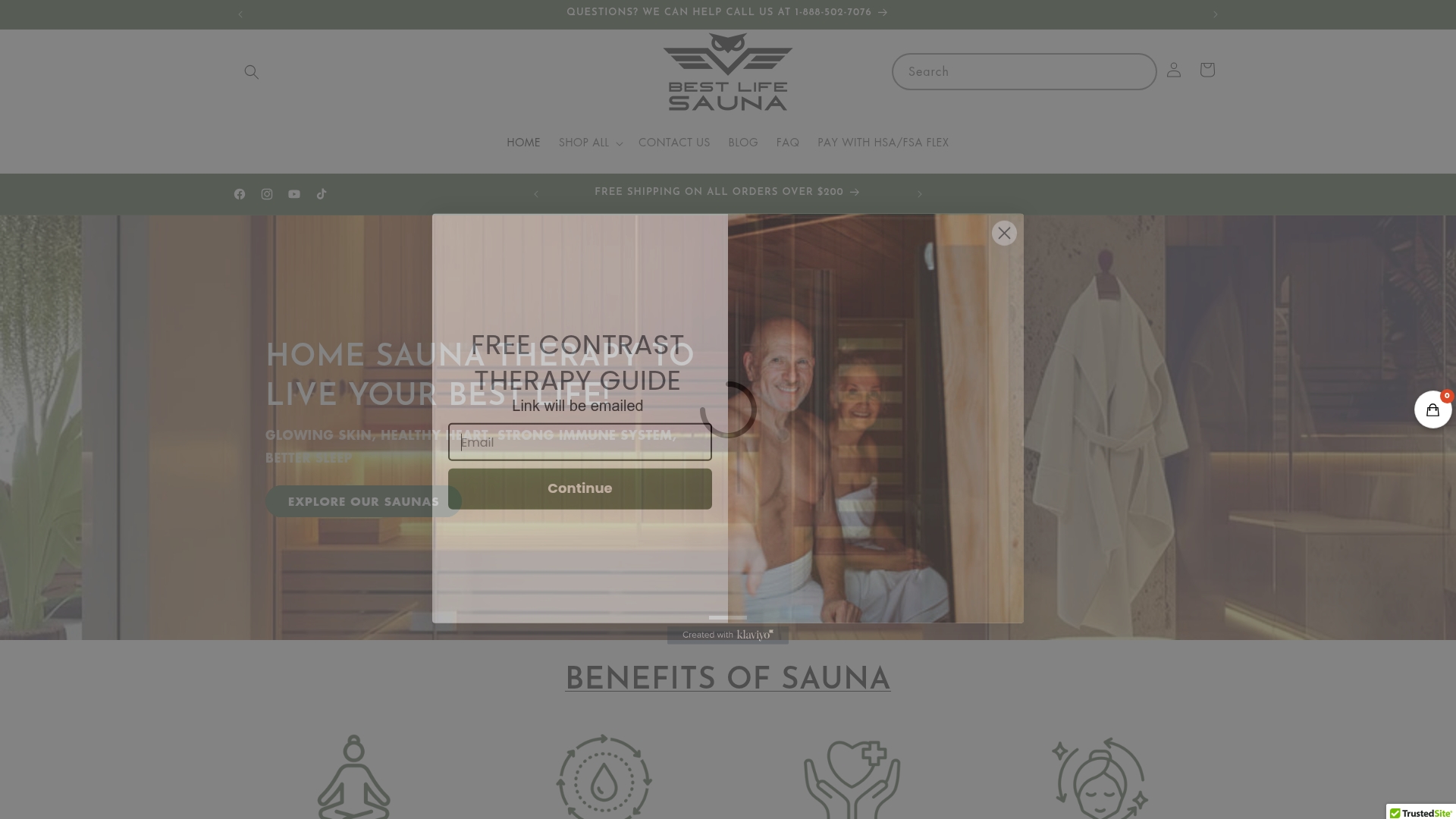
The Essential Guide to Sauna Use Guidelines
Most people think sitting in a sauna melts away fat, but research shows any weight lost is almost entirely water weight that comes right back. Confusion about saunas is everywhere, from health myths to mixed-up cultural views. Understanding what a sauna really is, how it works, and which type fits your needs can change your whole experience. This article untangles the facts, exposing common misconceptions and guiding you toward smarter, safer sauna sessions.
Table of Contents
- Sauna Use: Core Definitions And Misconceptions
- Types Of Saunas And Their Unique Features
- Health Benefits And Scientific Backing
- Recommended Sauna Sessions And Safety Tips
- Risks, Contraindications, And Common Mistakes
Key Takeaways
| Point | Details |
|---|---|
| Holistic Wellness Experience | Saunas promote relaxation, improved circulation, and potential cardiovascular health benefits beyond just weight loss. |
| Types of Saunas | There are various sauna types, including Traditional Finnish, Infrared, and Steam Rooms, each offering unique experiences and benefits. |
| Safety Guidelines | Limit sessions to 15–20 minutes, stay hydrated, avoid alcohol beforehand, and consult healthcare professionals if you have health concerns. |
| Potential Risks and Misconceptions | Sauna use can lead to dehydration and heat exhaustion; common myths should be debunked for informed usage. |
Sauna Use: Core Definitions and Misconceptions
A sauna is more than just a hot room where you sweat - it’s a holistic wellness experience with deep cultural roots and significant health potential. According to Wikipedia, a sauna is a small room or building specifically designed for experiencing dry or wet heat sessions, traditionally used for relaxation and promoting overall well-being.
Contrary to popular myths, saunas aren’t just about burning calories or losing weight quickly. As the research indicates, weight loss in a sauna is primarily water weight, which returns once you rehydrate. The true benefits are far more nuanced. These compact heated spaces offer significant physiological advantages like improved circulation, muscle relaxation, stress reduction, and potential cardiovascular improvements.
Interestingly, cultural perceptions of saunas vary widely. In Finnish culture, for instance, Theseus highlights that saunas are viewed as non-sexual, communal spaces focused on relaxation and social connection. This contrasts sharply with some Western misconceptions about sauna etiquette and purpose.
Key misconceptions about saunas include:
- Saunas are only for weight loss
- They are unsafe for people with heart conditions
- Saunas are primarily a luxury or indulgence
- One session provides comprehensive health benefits
In reality, sauna use is a nuanced practice requiring understanding of personal health conditions, proper hydration, and moderate, informed usage. Always consult healthcare professionals before integrating saunas into your wellness routine, especially if you have pre-existing health concerns.
Types of Saunas and Their Unique Features
Saunas are not a one-size-fits-all experience. According to Wikipedia, there are several distinct types of saunas, each offering unique heating methods and therapeutic experiences. Understanding these variations can help you choose the most suitable option for your wellness goals.
Traditional Finnish Saunas represent the classic sauna experience, characterized by dry heat and extremely high temperatures ranging from 70–100°C. These saunas create an intense heat environment where users can experience profound relaxation and sweating. In contrast, infrared saunas operate differently. Wikipedia explains that these modern saunas use infrared heaters to emit radiant heat directly absorbed by the body’s surface, allowing for lower ambient temperatures around 50–60°C while still inducing significant sweating.
Another popular variant is the steam room, also known as a Turkish bath. These spaces maintain 100% humidity with temperatures between 40–50°C, creating a moist heat environment that feels fundamentally different from traditional dry saunas. Each sauna type offers distinct benefits:

- Traditional Finnish Sauna: Highest temperatures, dry heat, intense sweating
- Infrared Sauna: Lower ambient temperatures, direct body heat absorption
- Steam Room: Moist heat, high humidity, gentler temperature
When selecting a sauna, consider your personal health goals, comfort level with heat, and any existing medical conditions. Some individuals might find infrared saunas more tolerable, while others may prefer the intense heat of a traditional Finnish sauna. Always consult healthcare professionals to determine the most appropriate sauna experience for your specific wellness needs.
Health Benefits and Scientific Backing
Sauna use isn’t just a relaxing experience - it’s a potential powerhouse of health benefits backed by emerging scientific research. Wikipedia reveals compelling evidence that regular sauna bathing can significantly impact cardiovascular health, with studies linking consistent use to reduced risk of sudden cardiac death and improved overall heart function.
The physiological mechanisms behind these benefits are fascinating. When exposed to mild heat stress during sauna sessions, the body activates heat shock proteins - special molecular defenders that help protect cells and potentially improve cardiovascular performance. According to the research, this process triggers a cascade of positive physiological responses, including improved blood circulation, enhanced cardiovascular function, and decreased blood pressure.
Infrared saunas, while promising, present a more nuanced scientific picture. Wikipedia notes that while many health claims exist, many require additional rigorous research to be conclusively substantiated. The potential benefits are tantalizing but not yet fully proven:
- Potential muscle recovery acceleration
- Possible cardiovascular health improvements
- Potential stress reduction mechanisms
- Preliminary indications of metabolic benefits
It’s crucial to approach sauna use as a complementary wellness practice, not a miracle cure. While scientific evidence shows promising trends, individual experiences can vary dramatically.
Anyone with pre-existing health conditions should consult healthcare professionals before integrating regular sauna sessions into their wellness routine. The key is moderation, informed usage, and listening to your body’s unique responses.
Recommended Sauna Sessions and Safety Tips
Maximizing the benefits of sauna use requires a strategic and informed approach. Wikipedia recommends limiting sauna sessions to 15–20 minutes, a guideline designed to promote safety and prevent potential heat-related stress. This timeframe allows your body to experience the therapeutic benefits without risking overexposure or dehydration.
Hydration is absolutely critical when engaging in sauna sessions. Before, during, and after your sauna experience, drinking water becomes non-negotiable. Alcohol consumption is strongly discouraged prior to sauna use, as it can impair your body’s ability to regulate temperature and increase risks of dehydration or heat-related complications. Wikipedia highlights the traditional Finnish practice of taking breaks between sessions to cool down and rehydrate - a wisdom that transcends cultural boundaries.
Safety considerations are paramount, especially for individuals with pre-existing health conditions. Here are essential guidelines for responsible sauna use:
- Limit sessions to 15–20 minutes
- Stay thoroughly hydrated
- Avoid alcohol before sauna use
- Listen to your body’s signals
- Exit immediately if feeling dizzy or uncomfortable
- Consult healthcare professionals if you have cardiovascular issues
For those with heart conditions or other health concerns, professional medical consultation is not just recommended - it’s essential. Your body’s unique responses to heat can vary significantly, and what works for one person might not be suitable for another. The golden rule of sauna use is simple: respect your body’s limits, stay hydrated, and prioritize your personal comfort and safety.
Risks, Contraindications, and Common Mistakes
Sauna use, while beneficial for many, comes with potential risks that demand careful consideration. Wikipedia highlights several critical dangers, including dehydration, heat exhaustion, and potential exacerbation of underlying medical conditions. Understanding these risks is crucial for safe and responsible sauna practice.
Common mistakes can transform a therapeutic experience into a potentially dangerous situation. Prolonged exposure is perhaps the most significant error users make. Wikipedia warns that staying in the sauna too long, not hydrating properly, and consuming alcohol before or during sessions can lead to serious health complications. The human body has clear limits when exposed to intense heat, and ignoring these signals can result in dangerous physiological stress.
Certain individuals should exercise extreme caution or avoid sauna use altogether. Potential contraindications include:
- Individuals with unstable heart conditions
- People with significantly low or high blood pressure
- Those experiencing acute illness or fever
- Pregnant women
- Individuals under the influence of alcohol or medications that impair heat regulation
Infrared saunas present their own unique considerations. While generally considered safe, Wikipedia emphasizes that many health claims remain scientifically unsubstantiated.
 Users should approach these technologies with informed skepticism, always consulting healthcare professionals before integrating them into their wellness routine. The key is understanding your body’s unique responses and respecting its limitations.
Users should approach these technologies with informed skepticism, always consulting healthcare professionals before integrating them into their wellness routine. The key is understanding your body’s unique responses and respecting its limitations.
Unlock the Full Potential of Sauna Use Safely and Effectively
Understanding the right sauna guidelines is essential to reap all the wellness benefits while avoiding common pitfalls like dehydration or overexposure. This article highlights the importance of timing sessions, staying hydrated, and choosing the right type of sauna whether it is a traditional Finnish sauna or an infrared option. If you are looking to bring these advantages into your home with confidence, finding quality sauna products designed for safe, enjoyable use is key.

Explore a wide selection of premium saunas and accessories at Best Life Sauna. Take control of your health journey with expertly crafted solutions that respect your body’s limits while enhancing circulation, stress relief, and skin revitalization. Don’t wait to make your wellness routine safer and more effective. Visit Best Life Sauna now and find the perfect sauna tailored to your needs and lifestyle.
Frequently Asked Questions
What are the main types of saunas and how do they differ?
Saunas primarily fall into three categories: Traditional Finnish Saunas, Infrared Saunas, and Steam Rooms. Traditional Finnish Saunas offer high temperatures (70–100°C) with dry heat, Infrared Saunas use lower temperatures (50–60°C) with radiant heat absorbed by the body, and Steam Rooms maintain high humidity with moist heat at lower temperatures (40–50°C).
How long should I stay in a sauna for optimal benefits?
It is recommended to limit sauna sessions to 15–20 minutes to promote safety and prevent overexposure or dehydration while still allowing the body to experience therapeutic benefits.
What are the health benefits of regular sauna use?
Regular sauna use may improve cardiovascular health, enhance circulation, promote muscle relaxation, reduce stress, and activate heat shock proteins that aid cellular protection and improve overall wellness.
Are there any risks or contraindications for sauna use?
Yes, sauna use can pose risks such as dehydration, heat exhaustion, and exacerbation of underlying medical conditions. Individuals with unstable heart conditions, high or low blood pressure, acute illness, or pregnant women should consult healthcare professionals before using a sauna.

